by Victoria Scott
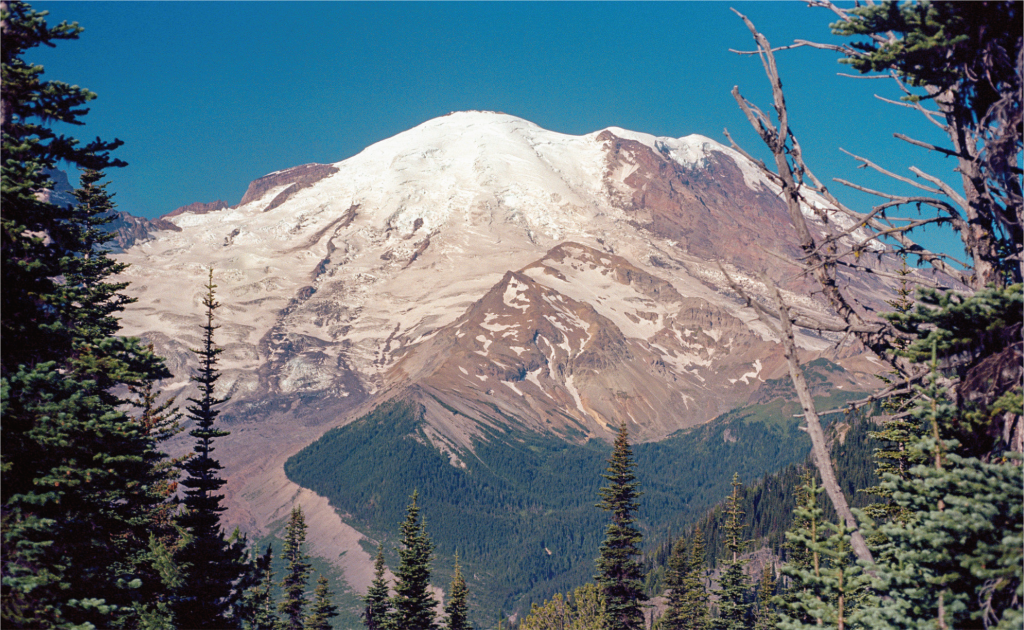
I sat on a rock on an outcropping at Second Burroughs, four miles into a hike near the base of Mt. Rainier, and ate glistening cherries out of a wet Ziploc bag. The group I’d been hiking with sat together in the center of the peak, and I walked away as close to the rocky, jagged edge as I dared and plopped myself down in silence. As I ate, I stared directly across the mile-wide chasm at the Mountain. Second Burroughs sits at 7,402 feet above sea level, roughly 2,000 feet above the ancient, glacially-carved canyon below. It still sits 7,000 feet below the peak of Mt. Rainier. Looking down was terrifying. Looking up was awe-inspiring.
This was when I began looking up.
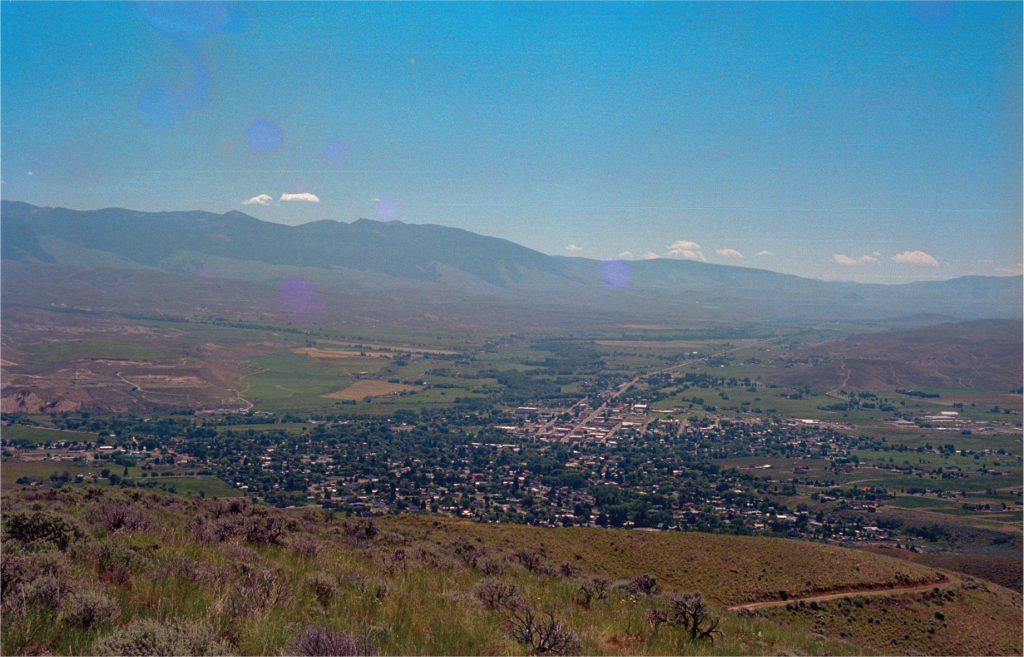
1: Salmon, Idaho, Spring
The summer up to that point was violently turbulent, stunning peaks followed by crushing valleys, and I never felt steady. One week, I was in Los Angeles thrashing a $180,000 supercar through National Forest b-roads on my way to my first book signing; the next, I was sitting alone in my partner’s empty, still house in Salmon, Idaho as I watched fire smoke pour into the valley and slowly blot out the sun.
Salmon was bad for a tgirl on a good day. 75% of the county voted Trump in 2020. The paranoia was palpable; the one time I tried taking photos at night, someone pursued me in a minivan, pulled into my driveway, and threatened me — with one hand in the glovebox — while I was home alone. Glares in public made me agoraphobic, scared to so much as grocery shop. Salmon’s sole saving grace was that it was so rural and secluded from the rest of America, it felt as though it was two decades behind on its right-wing grievances. While people were (clearly) unnerved by my presence, it wasn’t the topic de jour. They were still wound up about the second amendment and saying Merry Christmas way out there. That was probably how I’d survived.
I stayed alive for the eight months I’d lived there by taking frequent trips. I traveled for work often, and I took pleasure trips to Seattle even more often. Over the years since I came out, I’d watched a steady trickle of my friends from all across America move to the Puget Sound. Usually, they fled from hostile lands expelling them for being queer; Seattle seemed to welcome them with open arms. They welcomed me when I visited, too.
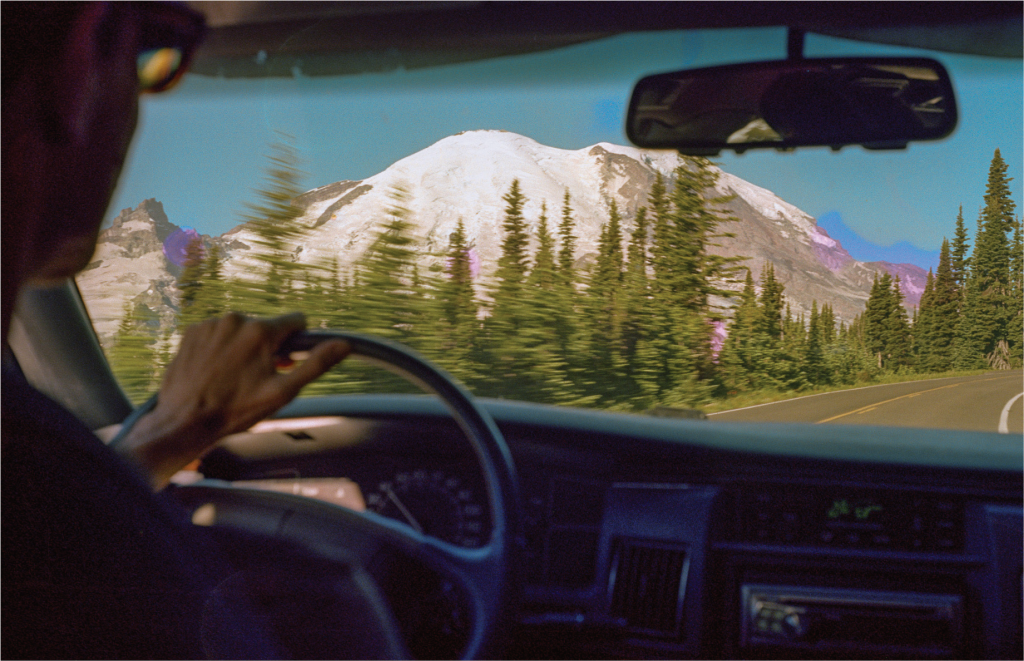
2: Paradise, Washington, Summer
The time I made it to Second Burroughs, I was in Seattle to stay. I couldn’t handle living in Salmon anymore, and I was running out of options. I’d struck out in every conceivable way looking for jobs and housing from afar. The morning of July 4th, I loaded up my partner’s Yaris and white-knuckled the winding drive through the mountains of Montana, cat riding shotgun, The Sunset Tree on the stereo. Seattle or bust. I celebrated my arrival by getting blackout drunk on my friend’s rooftop patio as fireworks erupted from a barge moored to the far shore of Lake Union.
I found a roommate easily, but the rest of my searches were exhausting and fruitless. The only job I could find was a part-time gig at minimum wage an hour and a half bus ride from the city, or commission-based work selling Hondas. The first apartment my roommate and I toured was a crumbling tenement. It consisted of a basement room with broken radiators and barred slits for windows.
With just three days left until I was headed back to Salmon, my optimism was fading. The hike was an attempt by concerned friends to lift my spirits. Three miles after Second Burroughs, our party arrived at the parking lot in Paradise, Washington. I cracked open a Rainier and sat on the tailgate of my friend’s wood-paneled Buick. I had missed a text while I was hiking. It was the only halfway decent apartment I’d toured, letting me know they were declining my application.
As my friend drove down the road leaving Paradise, Washington, I cried quietly as the Mountain receded, until I at last fell asleep on the periwinkle rear bench seat. When I woke, it had disappeared into the trees.
Two nights later as I packed my bags to head back to Salmon, I had a long discussion with my friend. I asked him if he thought everyone would be alright if I never came back.
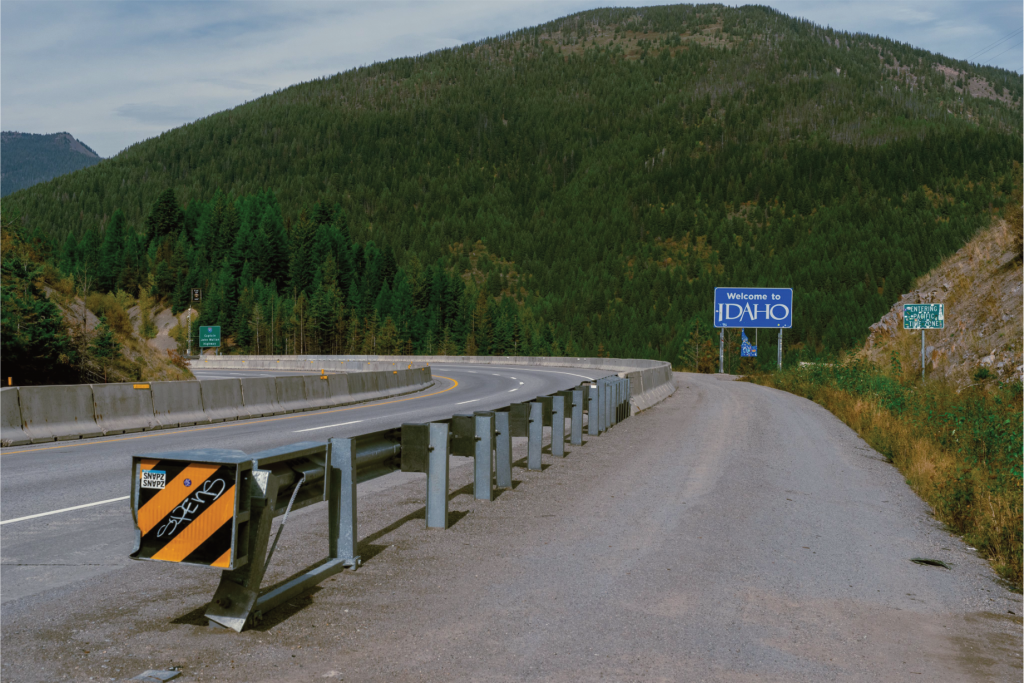
3: Interstate 90, Headed West
At 3,021 miles, Interstate 90 is the longest highway in America. It begins on the Atlantic Ocean in Boston, Massachusetts. It runs the length of New York until it hits Lake Erie, and there, it crosses through my birthplace in Buffalo. It runs alongside Lake Erie until it cuts through my childhood hometown of Cleveland, Ohio. Its concrete continues through Chicago and slowly skews northward as the interstate slowly climbs uphill, bisecting the cornfields of the Great Plains, with nothing but mind-numbing straight-shot flat-out driving in sight. In Western Montana, it intersects the leading edge of the Rocky Mountains and begins to meander through canyons, up and over the Continental Divide, until it passes through Missoula, Montana — my on-ramp from Salmon, Idaho.
From Missoula, it continues weaving through mountains, steadily gaining elevation once more until it hits Lookout Pass on the border of the Idaho Panhandle. From there, it’s downhill, winding through Coeur D’Alene until it finally passes into Washington state. It straightens back out as it slices through the savannah of the Columbia Plains until the Cascades rise from the earth. One more treacherous pass through the cliff sides of Snoqualmie, and you’re in the outlying suburbs of Greater Seattle. A floating bridge connects Bellevue to Seattle and the interstate crests over one last glacially-carved hill on the Western shore of Lake Washington. The final view of the 3,021 mile journey is the Seattle skyline silhouetted against the Olympic range. It’s not intended to be a scenic route, but for the 475 miles between Missoula and Seattle, it is.
When all my attempts to make it in Seattle failed three days after my Second Burroughs hike, I had to drive this journey in reverse. I stressfully navigated the labyrinth of steep one-way streets in a manual-transmission Yaris with a broken handbrake and a shrieking cat. I made it to the on-ramp for 90. There, I was deposited immediately onto the floating bridge, headed East towards Bellevue. On a clear day — like the one I left on – Mt. Rainier stands beautiful and tall above Lake Washington’s surface.
For all 6,620 feet of the Lacey V. Murrow Memorial Bridge, I barely kept the hatchback in my lane. My eyes were transfixed on the Mountain looming over the water. As I ascended into Bellevue and watched Seattle recede in the rear-view mirror, the treeline at last blocked my view. If I didn’t make it back — if I spent the rest of my life in that shitty little town in Idaho — that drive down 90 would be the last time I’d ever see it.
I pulled off thirty miles later in North Bend because I couldn’t stop crying.
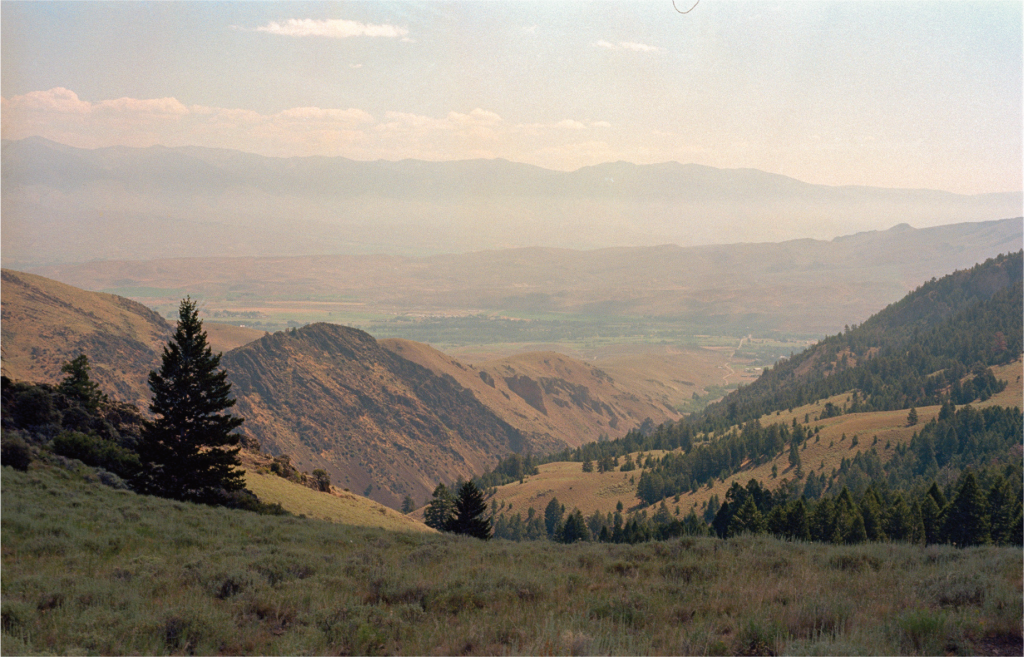
4: Salmon, Idaho, Fall
Winter in Salmon is long, dark, and cold. The town is perched on the 45th Parallel – the latitude equidistant between the Equator and the North Pole — and Main Street sits 4,000 feet above sea level. Before Halloween, the first dustings of powder arrive; it takes until late April for the last of the dirty slush to melt. I wasn’t sure if I could survive another Christmas alone in the silent nights. I was not ready to give up, though.
About a month after I made it back to Salmon, I quit smoking. I’d had roughly half a pack a day for roughly the past half a decade, and it was clearly beginning to hurt my ability to breathe at high altitude. This wasn’t acceptable. I was going back to the Mountain. Next time I was going to push the extra three miles and make it to Third Burroughs, where the trail is so close to Rainier you can practically touch it. I needed to make the nine mile round trip without running out of breath. So I didn’t buy more cigarettes.
October rolled around. I had enough money to survive, so I was going to survive.
This time, I packed up my car, a beaten and battered Toyota Camry I’d picked up for $600 and nursed back to running condition. I took everything I could fit, but left my cat this time, and told my partner to bring him when I found a place. I was going to couchsurf until I made something work. I drove the scenic route once more, 475 miles down Interstate 90.
Seattle or bust, but for real this time.
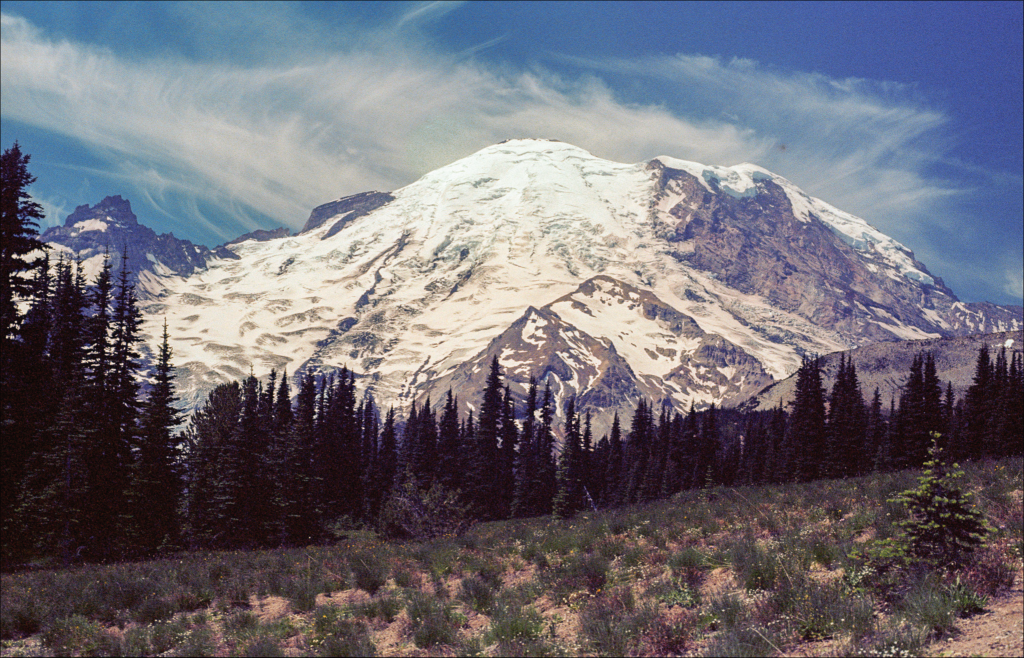
5: Seattle, Washington, Winter
I celebrated New Year’s by getting blackout drunk on my friend’s rooftop patio as the dull thud of fireworks echoed through the fog, resonating off of the apartment blocks around us. It was a different friend’s rooftop patio this time. She’s a trans woman who lives in the heart of Capitol Hill. Her house was so close to my apartment, my roommate — the one I met back in July — and I walked there in heels. When the clock struck midnight, the two of us kissed on the roof, and we were surrounded by queer couples in love.
Seattle was my lifeline in Salmon. This place was the promise that a better world already existed for me. Someday I could live near friends. Someday I could walk down the street with my head held high. Someday I could grocery shop without fear in my heart. I knew it was tangible, because I had experienced it here.
And since I moved, it has indeed been wonderful to grocery shop without fear in my heart. It is wonderful to come home to my cat, unfollowed and unthreatened for existing in the world. That undersells Seattle’s true beauty, however. My fondness for this city is marked by the presence of love, rather than the absence of fear.
I am going to Third Burroughs in July, when the gates to Paradise open. I will see the Mountain again. I hope it will be easier to hike ten miles without all the tar in my lungs, but if I don’t make it this time, it’ll be easy enough to try again. I live here now, and I can see the Mountain whenever I look up.

Victoria Scott is an automotive journalist, photographer, and author. She has lived in four states in the past five years, but Seattle is her true home. She lives with her cat and her partner in Capitol Hill.